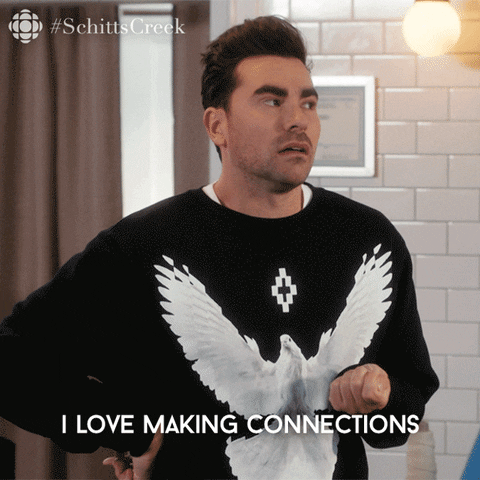The art of finding referrals and landing job interviews on LinkedIn
Are you looking for a job in the United States/Silicon Valley and not landing interviews even after 100s of applications? Keep reading!
The first step to getting your dream job is landing an interview with the company. Your role-fit, skillset, professional background does not matter until and unless you have an opportunity to talk about it with the recruiter i.e. get to the first stage of interviewing. Landing an interview, in my opinion is the toughest part in the entire hiring process. Your resume definitely plays an important role in your ability to land interviews but what also matters is HOW your resume is reaching the recruiter. This is where employee referrals come to the rescue. According to a recent study, there is a 4X more chance of you getting hired in a company via a referral as compared to a cold application. There are multiple other sources here, here, and here which, in short, say that referrals are good for both you and the company.
The world is relationship driven, and a referral is the ultimate indicator of belongingness.
With the importance of referrals being established, the next question to answer is: How do I actually get a referral? It is relatively easier to find connections and thus referrals for FAANG companies but how do you do it for companies where connections are hard to find? In this blog article, I am going to lay down the process of finding connections and referrals on LinkedIn and make it easy and replicable.
Why do I know this? I spent about 8 months during the pandemic in 2020–21 searching for a job in the US. During that time, I added over 1000 connections which lead to ~50 networking conversations and 9 job interviews. I did not follow the process that I describe below as I did not have guide to follow. My approach involved a lot of hit and trial and the process that I describe below is a culmination of my learnings in one place.
#1 Plan and stay focussed
Before you begin reaching out to people on LinkedIn, make a list of at least 10 -15 companies where you are eagerly looking for an opportunity to interview. You can use a tool like Notion or Excel to get started with this.
#2 Play the volume game
Once you have identified the companies, reach out to at least 40–50 people who hold the same title that you are looking to interview for within the first company. For smaller and growth stage companies, reach out to everyone with the same title. LinkedIn search tool is pretty handy where you can put filters for the company name and the title. It’d be even better if you can find people who went to the same school as you. It is important to maximize the reach as the percentage of people who might respond back to you will be between 1–5%.
#3 Personalize the message
Do not send connection requests without slightly personalizing the message. Keep a template message ready in your clipboard. Open the person’s profile and see if you find anything interesting to talk about/mention. Even one line of personalization in the message can make a huge difference in whether someone will respond back to your request or not. If there is nothing specific that you can find about the person, go ahead with the template message. If the person has a premium LinkedIn profile, do make sure to visit the profile. It’ll notify the person that you visited the profile and signal that you are performing a targeted/personalized reach instead of blindly connecting with everyone . This again increases the chance of a response.
#4 Keep you request straightforward and concrete
When sending connection requests, do not keep the message vague with statements like “I would like to connect”, “I want to add you to my network”, “I want to learn about your industry” etc. Keep your message crisp and specific. Talk about the fact that you are interested in a particular job opening, why you are interested in the job opening, and how they can help you. I favor asking for 15 mins of time over a Zoom call. A request like this helps people instantly decide whether they’d like to engage with you or not. Asking for 15 mins over Zoom is hard for people to deny as it is not a massive time commitment for someone who is interested in engaging with you.
A Zoom/video call gives you face time and an opportunity to ask a series of questions in a single conversation without going back and forth over messages.
#5 Send your portfolio in connection requests
A connection request over LinkedIn is limited to 140 characters, which is just not enough to introduce yourself and give your background to make someone interested in connecting with you. I would highly recommend investing some time in creating a portfolio that talks about your background, projects, experience, skills etc. Adding an URL to your portfolio in the connection request gives the person an opportunity to explore your background and become genuinely interested in connecting with you.
Sharing your portfolio adds substance to your interest in connecting with the person and eventually interviewing with the company.
#6 Make it easy for people to find time with you
You do not want to spend time and numerous messages with people trying to schedule time with you. Exchanging each other’s availability over messages and reaching a consensus to meet can be tedious task.
You’ll lose people’s time and attention if scheduling takes longer than expected and you’ll start getting ghosted.
You’d want to schedule a call as soon as someone shows interest in connecting. Use a scheduling tool like Calendly to make this process seamless. Open as many slots as possible to help people find time with you at the earliest.
#7 Download the LinkedIn mobile app and instantly respond to messages
LinkedIn is a professional networking platform and not one of those places that people frequently look at or respond to messages. People usually look at LinkedIn once a day, once a week or just open it occasionally to catch up on messages. If someone responds back to you, try your best to respond within the next 5–10 mins as it might be hard to get hold of that person again in the near future and engage in a conversation. It is extremely hard to re-engage with stale conversations. Use the LinkedIn mobile app and turn on your notifications for messages.
Respond back to messages as soon as you see them to successfully convert a reach out into a conversation.
#8 Do your research and show genuine interest in a conversation
Once you have successfully scheduled a call with someone, make sure that you research about their work, team, product, challenges, and anything that you can find about them on the internet. Prepare a list of 5–6 questions before hand to guide the conversation.
Ask interesting questions and show genuine curiosity during the conversation.
The person on the other side really needs to feel that you are interested in what they have got to say. By the end of the conversation the person should have positive feeling about having you on the team. If everything goes well, people generally offer for referrals on their own. Even if not, politely ask for a referral at the end of the call. The worst case scenario? They’d say no. Do not get disheartened and keep at it.
#9 Send a thank you note
After the conversation is over, send a thank you note over email as soon as possible. It not only shows that you are courteous and professional but also adds you to their contact list. Every connection that you make is a life long connection. It is always easier to follow-up on the same email thread in the future instead of introducing yourself from scratch as it gives the person an opportunity to recall the conversation.
Invest in these relationships as you never know when someone might be able to help you.
#10 Develop a rhythm
Sending connection requests to 100s of people and then networking might seem to be a tedious and scary task. Dedicate some time on your calendar for these activities as it might seem to be an ad-hoc activity with no return on investment. A lot of work needs to go in initially to see results. Send 40–50 connection requests in a single sitting, every day until you build a healthy pipeline of networking calls where you are speaking with 3–4 people every week. First few networking calls with a random bunch of people might seem super awkward but you’ll get the hang of it after you have done 5–10 of them. So before you decide that networking on LinkedIn is not working for you, give yourself at least 500 connection requests and 10 conversations before making that decision.
Are there other tips that worked out for you when you started networking? Please leave them in the comments below for the other readers.
Questions? Just reply to this email and ask!
Sincerely,
Tanay 👋





